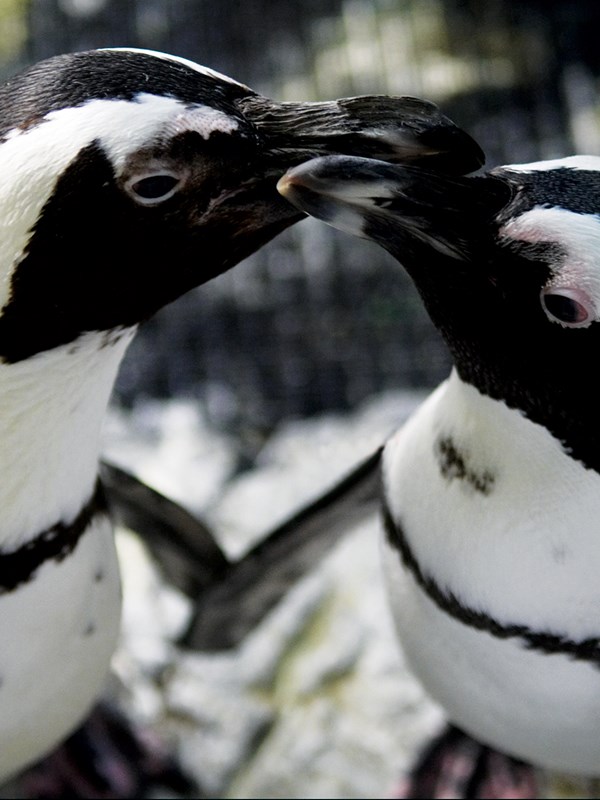
African Penguin
Scientific Name Spheniscus demersus
Native To Namibia and South Africa
Habitat Coastal waters, sandy beaches and rocky shores
Diet Piscivore: capelin, smelt, herring and squid
Size and Age 60-70 cm (23-28 in); average lifespan of 10-15 years in the wild (up to 25 years under human care)
Natural History
- Unlike their Antarctic cousins, African penguins are warm weather birds. They can be found in Namibia and South Africa. At only 60-70 cm (23-28 in) tall, they are much shorter than the more famous, cold-weather emperor penguins that can grow up to 130 cm (a little over 4 ft) tall.
- The classic black and white colouring of penguins are not just to make them look fancy! It is an effective form of camouflage called countershading. While swimming, their black backs hide them among the dark depths of the ocean. From below, their white bellies blend in with the much brighter water above. The belly spots of African penguins are just as unique, and identifying, as our fingerprints. Once a year, they go through a ‘catastrophic’ moult, where they lose all their feathers and grow new ones.
- African penguins can dive for two and a half minutes—normally to 30m (approximately 100 ft) deep.
- Closest relatives:
Magellanic penguin (Spheniscus magellanicus)
Humboldt penguin (Spheniscus humboldti)
Galapagos penguin (Spheniscus mediculus)
Critically Endangered

Conservation Status

- As of July 4, 2024, the African penguin has been officially downgraded to Critically Endangered by the International Union for Conservation of Nature (ICUN).
- In 1956 there were 141 thousand breeding pairs, then 57 thousand breeding pairs in 2004, 17 thousand pairs in 2019 , and as of 2023, the population is down to 9,900 breeding pairs of African penguins.
- There are a lot of things being done to help African penguins—and you can help too! Choose seafood approved by Ocean Wise, a non-profit organization dedicated to sustainable oceans, to help ensure African penguins have a steady food source. You can also support the efforts of organizations such as the Southern African Foundation for the Conservation of Coastal Birds (SANCCOB) which rehabilitates around 1,500 African penguins each year.
- At Marine Life, we are doing our part as well. As an active participant in the Species Survival Plan, we both breed these endangered birds, and help to hold valuable genetic diversity. This participation is part of our contribution to zoos and aquariums building a large, healthy population of African penguins under human care – almost as a backup population in case of extinction in the wild. More than half of our colony has hatched at West Edmonton Mall’s Marine Life.
Interesting Facts
- African penguins can swim up to 20 km/hour.
- They have a nictitating membrane—a transparent third eyelid that protects their opened eyes in salt water.
- Their scientific name, Spheniscus demersus, comes from the Greek work sfina, meaning wedge (referring to their streamlined swimming shape), and the Latin word dermersus, meaning plunging.
- Birds that fly have hollow bones. Penguins, on the other hand, have dense bones that help them dive and swim.
- African penguins make a loud braying sound, similar to a donkey, to communicate with each other.
Help protect African Penguins and make a donation at Marine Life. 100% of donations go to The Southern African Foundation for the Conservation of Coastal Birds (SANCCOB).

